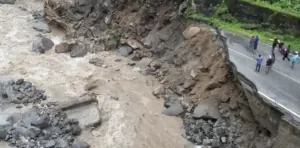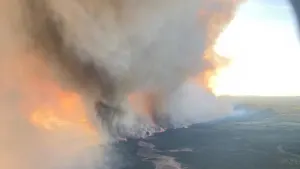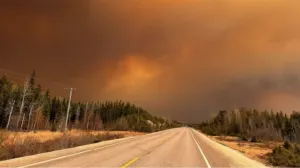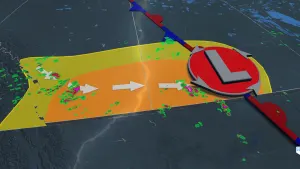
Say hello to Awasis, Canada's very own newly named alien planet
Two Canadian space and astronomy enthusiasts can now claim to have named an exoplanet!
Alberta science teacher Amanda Green, and Manitoba's "very own Star Guy", Wilfred Buck, have written two new names among the stars.
Roughly 320 light years away from Earth, in the direction of the constellation Bootes, is a Sun-like star circled by a massive gas giant planet. Up until now, this star went by the rather dull and convoluted moniker HD 136418, based on the fact that it was the 138,418th star listed in the Henry Draper astronomical catalogue, which was published a century ago.
When astronomers discovered a planet orbiting this star in 2010, it was simply given the same name, with a 'b' added at the end, to denote that it was the first planet found in that system - HD 136418b. This, despite it being remarkable at being roughly twice the mass of Jupiter and orbiting within its star's habitable zone.
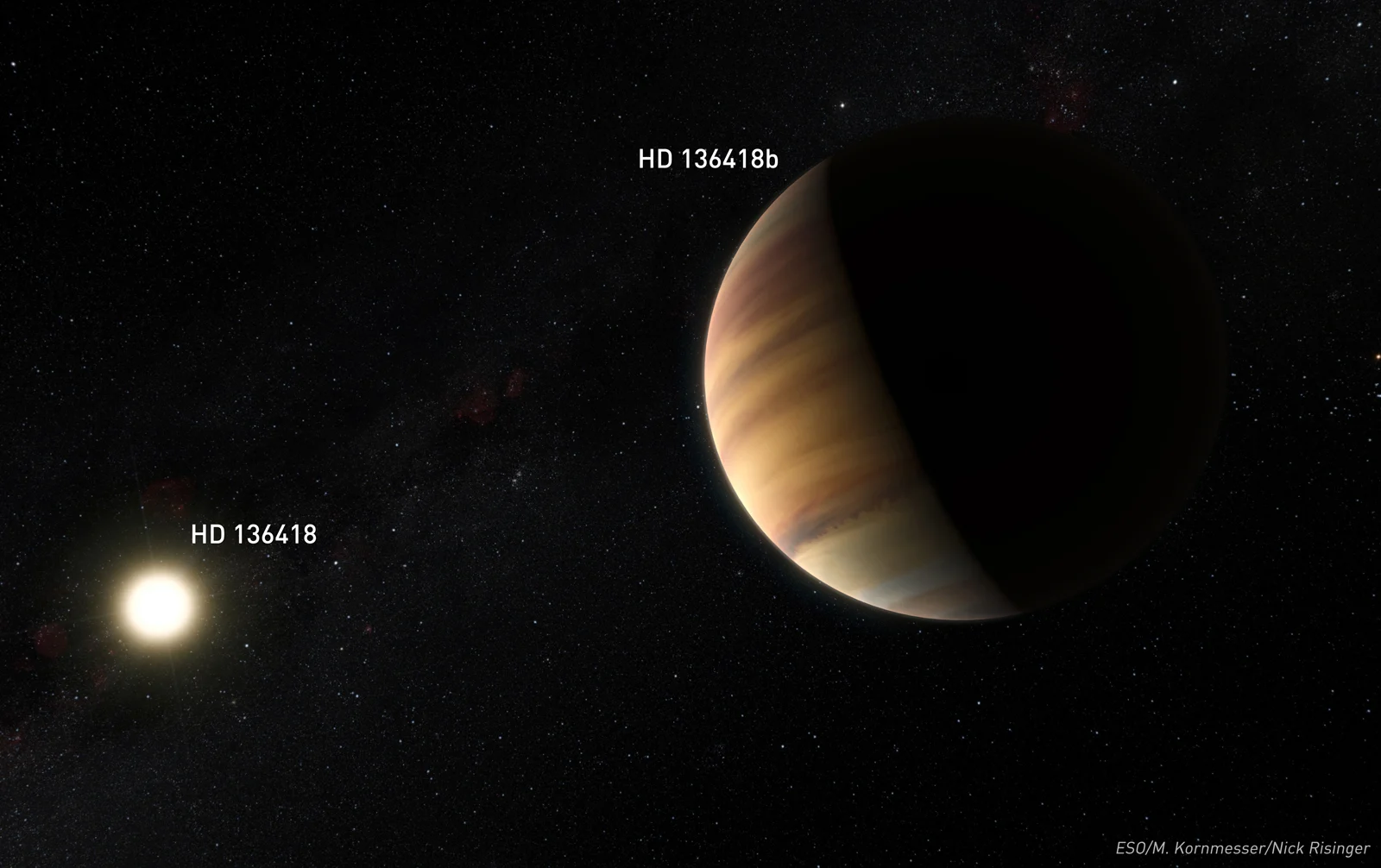
This artist impression of a gas giant exoplanet orbiting a Sun-like star is likely very close to the appearance of the HD 136418 star system. Credits: Image by ESO/M. Kornmesser/Nick Risinger, labels added by Scott Sutherland
While these names are handy for astronomers to look up stars for study, catalogue names don't capture the attention like Vega, Betelgeuse, Aldebaran and Sirius, or even Alpha Centauri and Tau Ceti. Now, thanks to Green's and Buck's suggestions, this particular astronomical pair has a set of new names that are far more interesting.
Star HD 136418 is now officially named "Nikawiy", which is the Cree word for "mother", and planet HD 136418b is now officially known as "Awasis", the Cree word for "child".
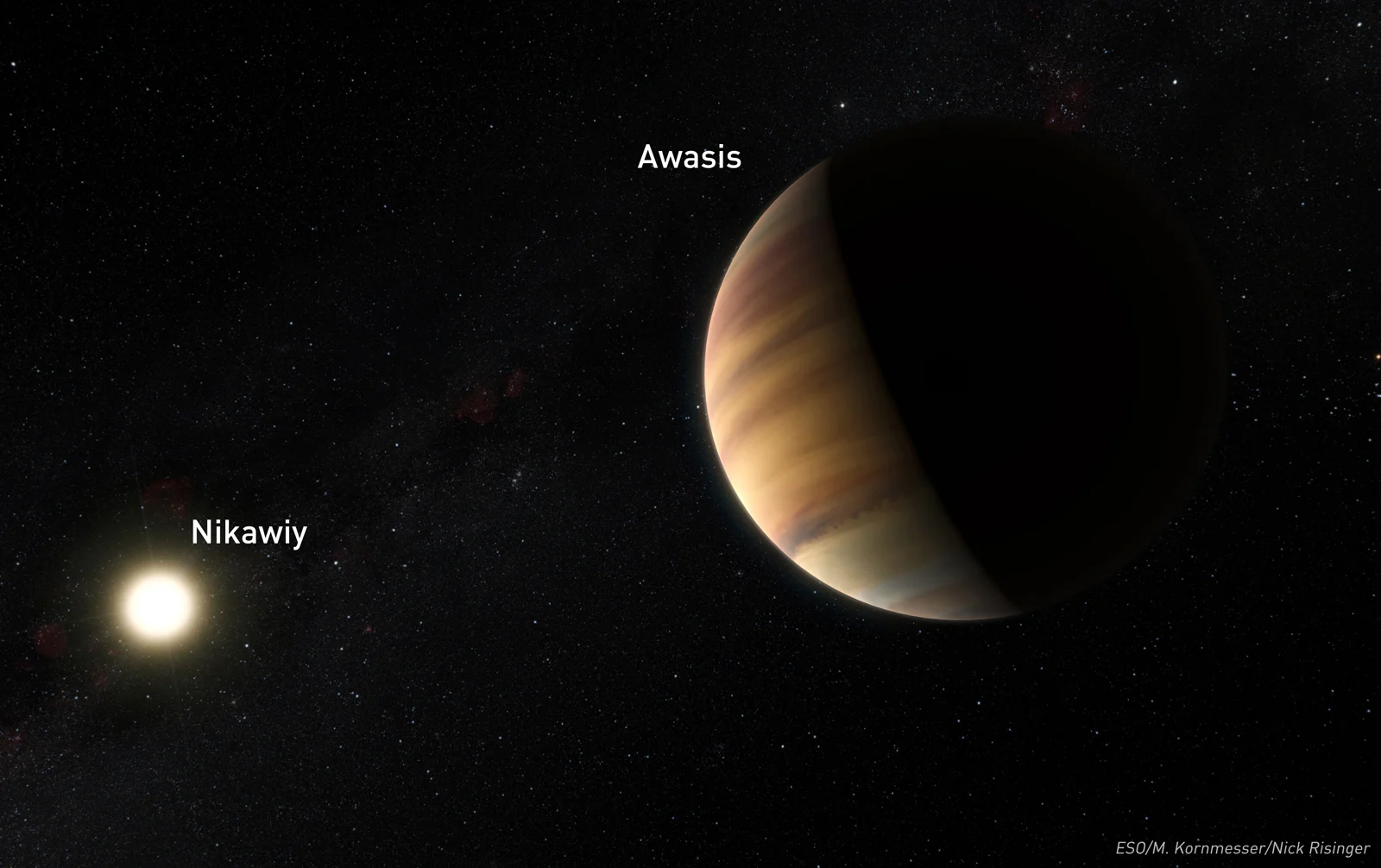
Credits: Image by ESO/M. Kornmesser/Nick Risinger, labels added by Scott Sutherland
Back in June, to help celebrate their 100th anniversary, the International Astronomical Union chose 112 star and planet combinations from their extensive catalogue of astronomical bodies to officially receive real names. HD 136418 and HD 136418b were among those selected.
"While astronomers catalogue their new discoveries using telephone-number-like designations, there has been growing interest amongst astronomers and the public alike in also assigning proper names, as is done for Solar System bodies," Eric Mamajek, co-chair of the NameExoWorlds Steering Committee, said in an IAU press release.
To name these objects, the IAU started the NameExoWorlds campaign, opening it up to the entire world! They assigned each of the star and planet pairs to a different country, with the citizens of that country asked to come up with name suggestions. HD 136418 and HD 136418b became Canada's exoplanets.
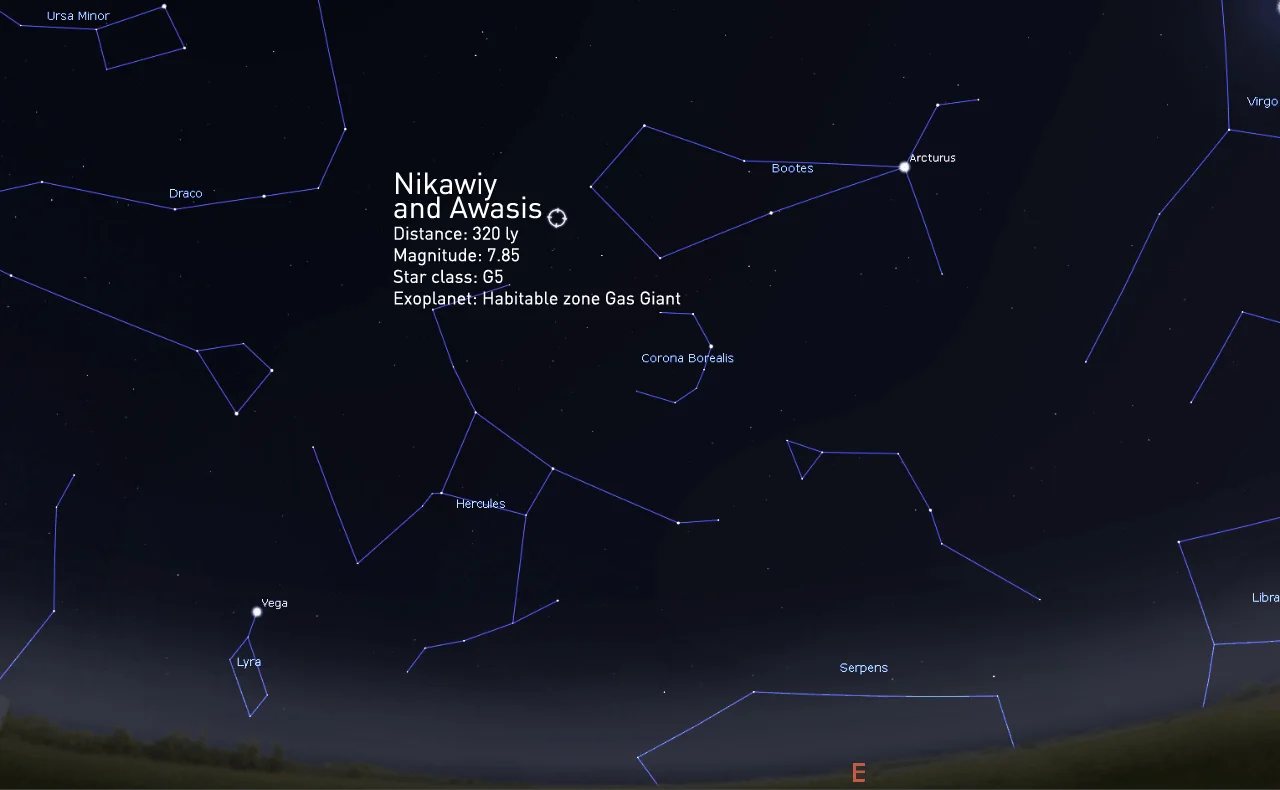
The location of Nikawiy and Awasis in the pre-dawn sky on December 20, 2019, along with some of the characteristics of this star system. Credit: Stellarium/Scott Sutherland
Just this week, the IAU announced their final choices. Of the four combinations submitted, Amanda Green's and Wilfred Buck's suggestions were the ones picked from Canada!
Amanda Green is the lead Science and Technology teacher at École Champs Vallée School, in Beaumont, AB. She is also a public speaker, spreading her enthusiasm for science, technology, engineering and math (STEM), promoting women in STEM, and supporting Canada's involvement in the space industry. Just last year, Green shared the 2018 Alberta Teachers' Association Science Council Outstanding Teacher Award with her "Martian Teacher" colleague, Julie Arsenault. Green was a guest speaker at the 2018 Canadian Space Summit, and along with Arsenault, she delivered the ending keynote at the 2019 Students for the Exploration and Development of Space (SEDS-Canada) Ascension Conference.
Wilfred Buck is an Opaskwayak Cree Nation science facilitator, at the Manitoba First Nations Education Resource Centre (MFNERC). Travelling to different communities with his mobile, inflatable dome-shaped planetarium, Buck teaches students about the night sky from the perspective of First Nations mythology.
"They are seeing their own culture right before their eyes that they were never told about," Buck said in a 2016 CBC Radio interview. "They have to know they are connected to the universe and they also have to know that their people knew just as much about the stars as anyone else."
"The IAU is delighted to see the broad international interest that this NameExoWorlds campaign has generated," IAU President-elect Debra Elmegreen said in the press release. "It is gratifying that so many people across the globe have helped create a name for a planetary system that is meaningful to their culture and heritage. This effort helps unite us all in our exploration of the Universe."
According to the IAU, 780,000 people participated in this project, from around the world, with 360,000 different proposals submitted. In recognition of the UN 2019 International Year of Indigenous Languages, they encouraged participants to submit names from those languages. All four naming suggestions from Canada were based on indigenous words, from the Cree, Inuktitut and Ojibwe languages. A few dozen of the final names chosen were of indigenous origin.
Sources: IAU | NameExoWorlds | Canadian Astronomical Society | Amanda Green | MFNERC | CBC







